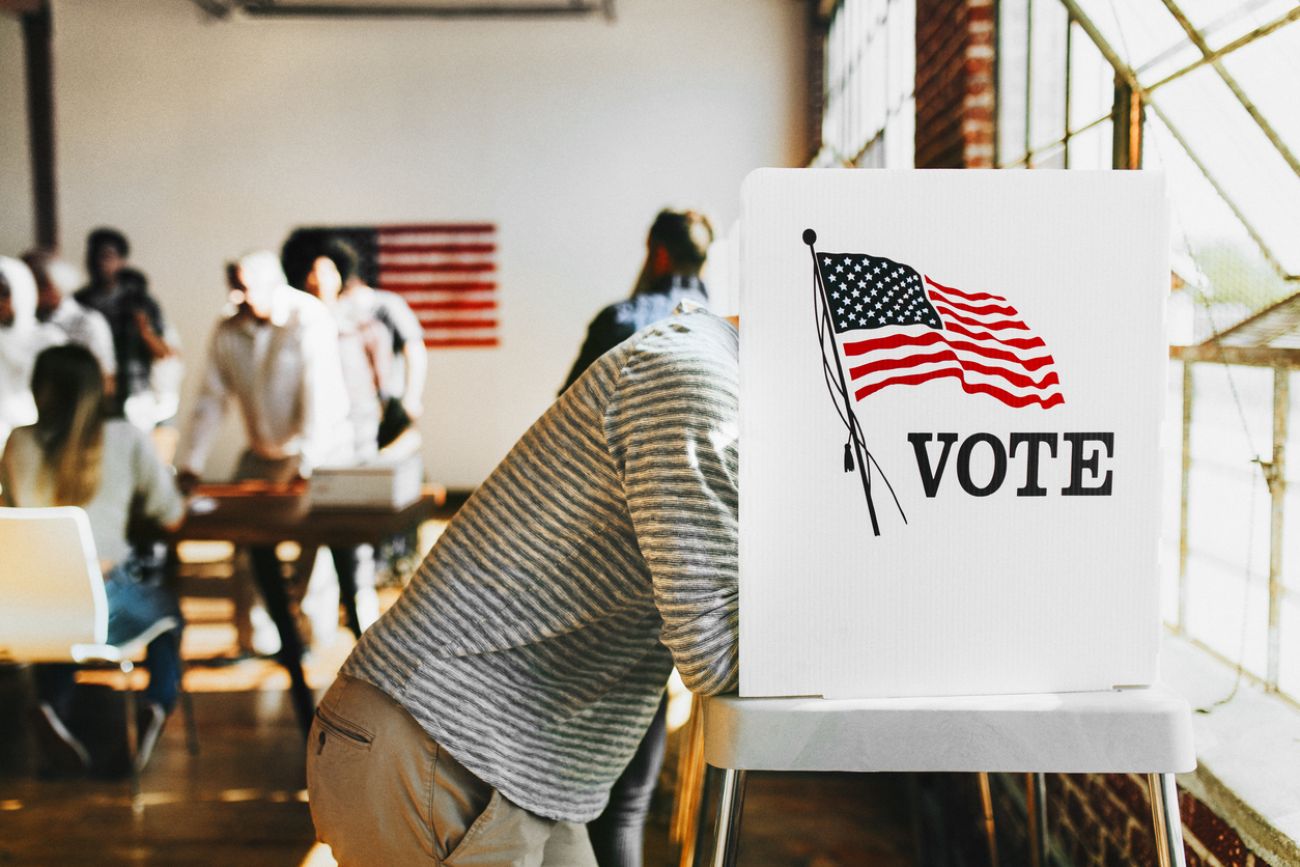Michigan voter rolls inflated by 500K. State says it’s no issue. GOP disagrees

- Michigan's voter rolls list 8.4 million registered voters, nearly 500,000 more than the eligible voting population
- Republicans have sued claiming bloated rolls could lead to fraud
- Michigan plans to remove over 600,000 inactive voters by 2027, but the state’s rolls remain among the nation’s most inflated
Oct. 22: Federal judge dismisses GOP lawsuit over Michigan voter rolls
Three weeks from an election in which the state will likely play a prominent and potentially deciding role, Michigan has one of the most bloated voter rolls in the nation.
The state currently has 8.4 million registered voters, according to the latest records obtained by Bridge Michigan, nearly 500,000 more than the number of people in the state who are old enough to vote.
It’s the biggest imbalance among Great Lakes states and one of the largest in the nation.
Related:
- Michigan elections FAQ: Why bloated voting rolls don’t lead to fraud
- Kamala Harris, Donald Trump ramp up fight for Michigan in final weeks of campaign
- GOP sues Michigan to block ‘never resided’ voters in presidential election
- Michigan elections FAQ: Do early, absentee ballots count if a voter dies?
While critics say the inflated rolls are not ideal, no one is suggesting they have contributed to fraud. One major cause of the imbalance: A voter-approved 2018 proposal that automatically registers those 18 and older to vote when applying for a driver license, unless they opt out.
Here’s a look at the issue.
What they’re saying
The Republican National Committee sued the state in federal court over the issue in February, demanding the state trim the rolls. The GOP in 2020 filed a similar suit, which was dismissed after thousands were removed from the rolls.
A spokesperson for Democratic Secretary of State Jocelyn Benson, who has been named in multiple lawsuits, said the complaints are part of an effort to sow distrust of elections.
The lawsuits, including three filed in the last month, “lay the groundwork to overturn the results of the election if they don’t like them,” said Angela Benander.
The legal challenges “are an attempt to cause people to question the process,“ Benander said.
The GOP lawsuit did not allege fraud but argued the rolls increase the opportunity for it. The suit also claims that inflated rolls cause political parties to spend more money on mailers and other voter outreach.
Since the lawsuit was filed, more than 200,000 more people have registered.
Removing voters
By 2027, an estimated 606,800 inactive voters are expected to be removed from rolls, Benander said, pushing the total to just over 7.8 million.
That’s slightly less than the voting-age population and would move Michigan to the third-highest imbalance among states to the fifth.
Why are inactive voters so hard to remove?
By federal law, the state or local clerks can remove voters from the rolls after the state notified they moved to another state, or if election mail sent to their home is returned as undeliverable and after they do not vote in two consecutive federal elections.
In 2018, the year Benson was elected, the state had roughly 7.8 million people of voting age, just under 7.5 million registered voters, of whom just under 6.5 million were considered active voters.
By 2022, the voting-age population had grown slightly, to 7.9 million. But registered voters jumped by over 700,000 to 8.2 million, of whom nearly 7.3 million were considered active voters.
Melanie Ryska, clerk for the city of Sterling Heights and a former Wayne County elections official, said the state’s “quite robust” voter rules led to larger voter rolls that are administered by the state and over 1,500 municipal clerks charged with handling elections.
Chris Thomas, a retired state elections official for four secretaries of state, said people who never had registered were more likely to get on the rolls if they got a new driver license after 2018.
Once on the rolls, it’s hard to get them off because of the federal rules, Thomas said.
“They’re not coming off,” he said. “Once you’re on you’re on until you die.”
What about fraud?
Thomas said he doesn’t fear widespread fraud in part because people have to knowingly falsify a signature.
“Impersonation fraud is almost non-existent,” he said.
Vote fraud happens, but it’s rare. Just this month Michigan Attorney General Dana Nessel’s office charged four St. Clair Shores voters with voting twice in the August primary.
Most often, when allegations of fraud are raised, they end up baseless, including 2020 allegations of dead Michigan voters casting ballots.
Many of the counties with the highest imbalances are in Republican-leaning counties in northern Michigan.
Michigan’s voter rolls do include the names of 16,666 people who were born in 1924 or earlier.
But in 2024, only 1,121 of those people voted, according to a Bridge Michigan review of voter histories.
One of the oldest of that group of centenarians, Claudia Mae Williams of River Rouge, was very much alive in February when she celebrated her 109th birthday.
See what new members are saying about why they donated to Bridge Michigan:
- “In order for this information to be accurate and unbiased it must be underwritten by its readers, not by special interests.” - Larry S.
- “Not many other media sources report on the topics Bridge does.” - Susan B.
- “Your journalism is outstanding and rare these days.” - Mark S.
If you want to ensure the future of nonpartisan, nonprofit Michigan journalism, please become a member today. You, too, will be asked why you donated and maybe we'll feature your quote next time!





